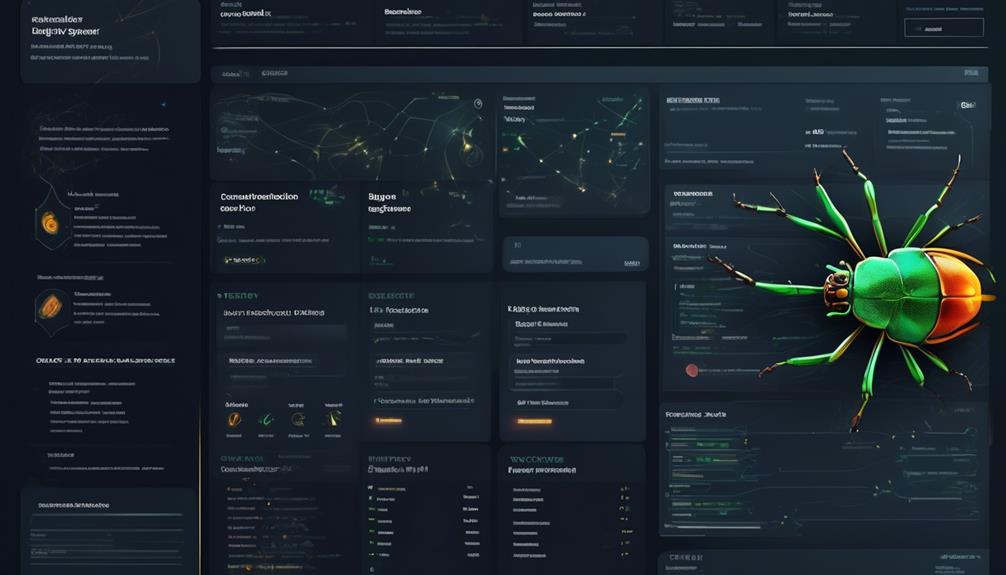Documentation-driven testing is a simple yet powerful approach that helps you clearly define requirements upfront, making your testing more organized and efficient. By creating detailed user stories, acceptance criteria, and scope, you reduce ambiguities and improve team alignment. This method also simplifies converting your documentation into automated tests, saving time and effort. When you focus on clear documentation, you build a strong foundation for ongoing improvement—and there’s more to discover if you keep exploring this approach.
Key Takeaways
- Documentation-driven testing shifts focus from fixing bugs to proactive planning, clarifying requirements and reducing misunderstandings.
- Clear documentation simplifies automating tests, ensuring they reflect real user behavior and align with evolving needs.
- It enhances test scope clarity, prevents scope creep, and helps prioritize testing based on user impact and risks.
- Living documentation facilitates onboarding, audits, and continuous improvement, keeping testing aligned with project goals.
- Promotes team collaboration, transparency, and a positive mindset, making testing more organized, effective, and adaptable.

Have you ever wondered how to make your testing more organized and effective? One surprisingly simple hack is adopting a documentation-driven testing approach. Instead of jumping straight into writing tests or manually testing features, you start by clearly documenting your requirements, expectations, and scenarios upfront. This method shifts the focus from reactive bug fixing to proactive planning, ensuring you understand what needs to be verified before diving into test execution. When you rely on thorough documentation, it becomes easier to identify gaps early and avoid redundant tests later. This approach also helps align everyone involved—developers, testers, and stakeholders—since everyone works from the same well-defined set of user stories and acceptance criteria.
In the context of test automation, documentation-driven testing shines even brighter. When you have detailed documentation, converting requirements into automated tests becomes straightforward. You can write automated scripts directly from user stories, which describe how users interact with the system and what outcomes they expect. These user stories serve as a blueprint, enabling you to create reliable, repeatable tests that reflect real user behavior. Automated tests based on well-crafted documentation reduce manual effort, speed up feedback cycles, and increase test coverage. Plus, when requirements change, updating the documentation naturally guides you to modify existing tests or create new ones, keeping your test suite synchronized with the current state of the product.
The beauty of documentation-driven testing is that it encourages clarity and precision from the outset. When you document user stories thoroughly, you clarify the scope and purpose of each feature, making it easier to pinpoint what needs testing. This clarity prevents scope creep and helps you prioritize tests based on user impact and risk. As a result, your testing process becomes more efficient, and you gain confidence that your application meets the specified requirements. Moreover, documentation becomes a living artifact that supports onboarding new team members, audits, and continuous improvement efforts. It ensures that testing isn’t just a series of isolated tasks but part of a cohesive, well-understood process. Additionally, embracing the Law of Attraction principles can help teams foster a positive mindset towards continuous improvement and collaboration in QA processes.
Frequently Asked Questions
How Does Documentation Driven Testing Compare to Traditional Testing Methods?
You might wonder how documentation driven testing compares to traditional methods. It emphasizes clear documentation, which improves requirement clarity and guarantees thorough test coverage. Unlike traditional testing, where tests are often created on the fly, this approach relies on detailed documents to guide your testing process. This way, you reduce missed requirements, increase consistency, and streamline communication among team members, making your testing more efficient and reliable.
What Tools Are Best for Implementing Documentation Driven Testing?
You should consider tools like JUnit, TestRail, or Zephyr for implementing documentation driven testing. These tools help you automate tests, ensuring requirement clarity and coverage. Test automation streamlines the process, making it easier to keep documentation aligned with evolving requirements. By choosing the right tools, you enhance accuracy, reduce manual effort, and improve collaboration, ultimately making your testing process more efficient and reliable.
Can Documentation Driven Testing Be Integrated With Agile Workflows?
Imagine your team weaving a tapestry—each thread representing test automation and stakeholder communication. Documentation driven testing fits seamlessly into agile workflows, acting as the guiding pattern. It guarantees everyone stays aligned, with tests evolving alongside sprints. You’ll find it simplifies collaboration, keeps documentation live, and enhances test coverage without slowing down development. This approach helps you deliver quality faster, all while maintaining clear communication across your team.
What Are Common Pitfalls When Adopting Documentation Driven Testing?
When adopting documentation driven testing, you might face pitfalls like insufficient test coverage if documentation isn’t exhaustive enough. You also risk misaligning with stakeholders if the documentation isn’t regularly updated or shared. To avoid these issues, make sure your documentation is thorough and keeps everyone aligned. Regular reviews help maintain stakeholder confidence, and clear documentation improves test coverage, making your testing more effective and aligned with project goals.
How Does This Approach Impact Testing Team Collaboration?
You’ll find that this approach enhances team communication by encouraging clear documentation, which makes expectations and test cases transparent. It promotes knowledge sharing, as everyone has access to the same information, reducing misunderstandings. Collaboration becomes smoother because team members can easily review, update, and contribute to test documentation. As a result, your testing process becomes more coordinated, efficient, and aligned, ultimately boosting overall quality and team cohesion.
Conclusion
By embracing documentation driven testing, you tap into a surprisingly simple yet powerful approach. It encourages you to verify your assumptions and guarantees your tests reflect real user needs. The truth is, clear documentation isn’t just for communication—it’s a tool for discovery. When you rely on it, you uncover gaps early, saving time and effort. Ultimately, this method reveals that simplicity, combined with diligence, can lead to more reliable and meaningful software outcomes.
Randy serves as our Software Quality Assurance Expert, bringing to the table a rich tapestry of industry experiences gathered over 15 years with various renowned tech companies. His deep understanding of the intricate aspects and the evolving challenges in SQA is unparalleled. At EarnQA, Randy’s contributions extend well beyond developing courses; he is a mentor to students and a leader of webinars, sharing valuable insights and hands-on experiences that greatly enhance our educational programs.









